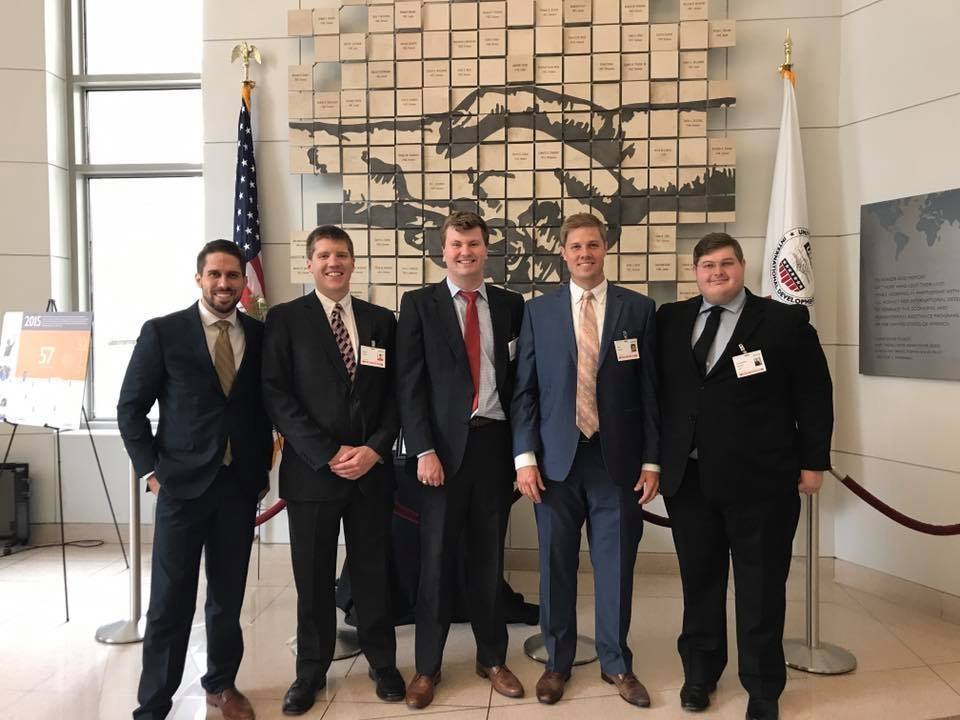
The desperate longing to escape terrorism, political unrest, or civil war—most recently in Middle Eastern countries—is often cited as one of the primary reasons for migrating to European Union countries. As the local environment becomes unsafe and less secure, refugees are “pushed” toward migration, despite the uncertainty and perils of the journey. The heart-rending stories of families taking unbelievable risks to reach safe havens in Europe and the increase in European refugee migration continue to be a major challenge for many EU countries.
Equally important are the “pull” elements of the situation: the factors in a host country’s asylum policies that encourage or discourage refugees and asylum seekers when choosing a particular destination. Understanding both the push and pull elements is essential if EU countries are to develop solutions that will respond effectively to the flood of refugees and also ensure their national security.
A recent capstone team, including Jacob Arnett, Benjamin Fein, Kevin Green, Jacob Rogers, and Christopher Shirley, led by Dr. Ren Mu at the Bush School and funded by Texas A&M’s Center on Conflict and Development (ConDev) and the Department of International Affairs, analyzed how the implementation of certain policies could affect the ongoing refugee flows to Europe.
Far From Home: Liberal Arts Student Films Refugee Crisis Abroad
The team documented changes in asylum policies of twenty-eight European Union countries between 2010 and 2016. The research shows that refugees consider the overall asylum stances of potential destination countries when deciding whether to apply for asylum. For example, as border controls get tougher, more refugees seek asylum, and when social benefits increase, both refugee and asylum seeker numbers rise. Equally important to refugees is the overall domestic political and economic climate of the host country since that affects how they will be treated there. Not surprisingly, “push factors” in refugee sending countries, such as relatively little perceived political freedom and severe conflicts, are important determinants of the scale of refugee flows. “Studying our findings on the significant factors affecting refugee flows and asylum seekers’ applications will allow nations to craft policies that either encourage or discourage the flow of refugees to their country,” concluded the study.
In May, the team members traveled to Washington, DC, and presented their findings to the United States Agency for International Development (USAID) and Chemonics, a for-profit international development company.
Con/Dev, the team’s capstone client, is part of USAID’s Higher Education Solutions Network, whose Development Labs utilize the intellectual power of academic institutions to help USAID and the wider development community discover more innovative, results-driven, efficient, cost effective, and accessible solutions to global development challenges.
Con/Dev’s assistant director, Dr. Leslie Ruyle, said Con/Dev is pleased with the Bush School collaboration and the outstanding capstone projects.
“We are proud to share this work with USAID and other development practitioners who are working on programs and policies that affect real-world problems. “The Trends and Determinants of Asylum in Europe” capstone research project led by Dr. Mu is an excellent example of how students can conduct robust research with implications for real-world problems. This is part of a larger portfolio of work that the Bush School and ConDev are collaborating on in order to understand the refugee crisis better,” said Ruyle.
###
This story originally appeared on the Bush School website.



